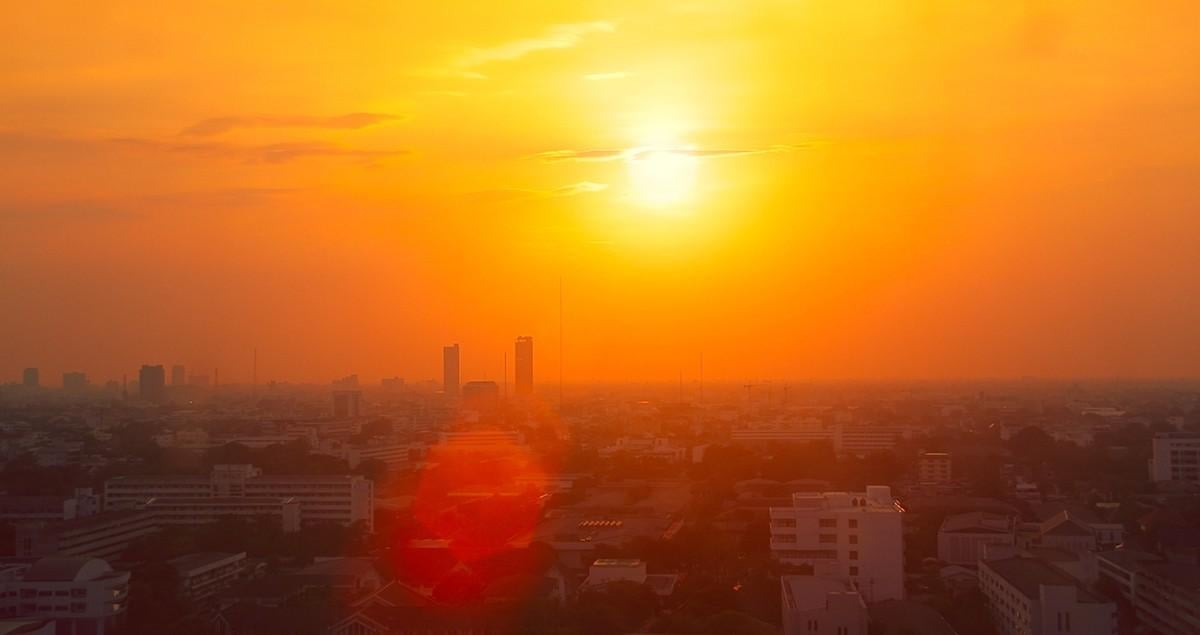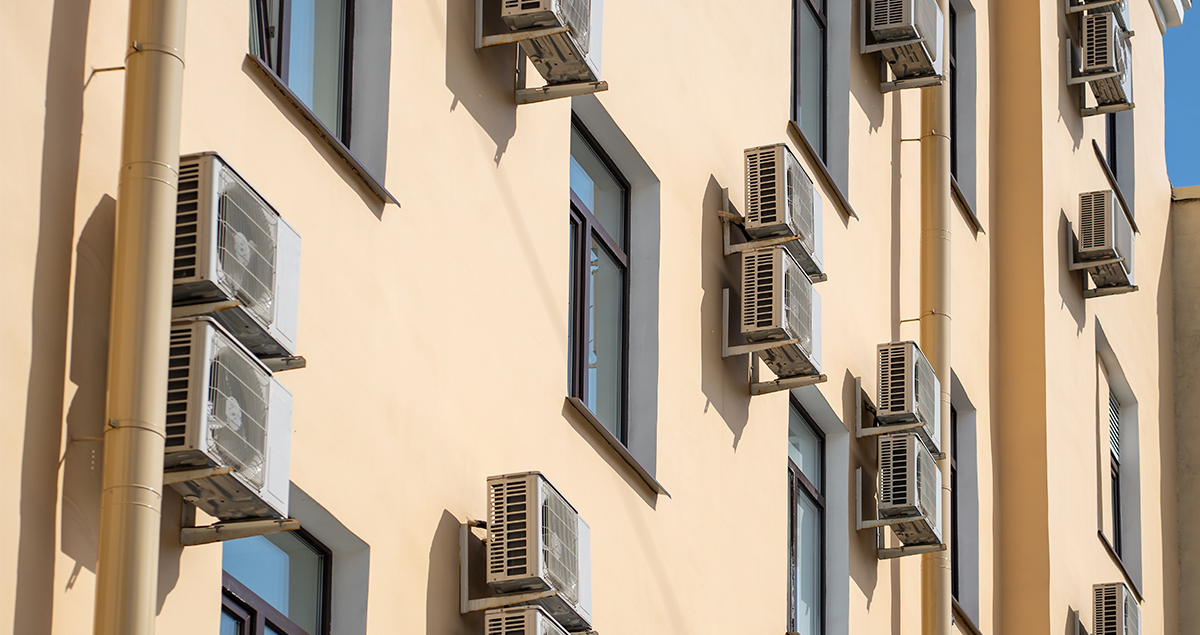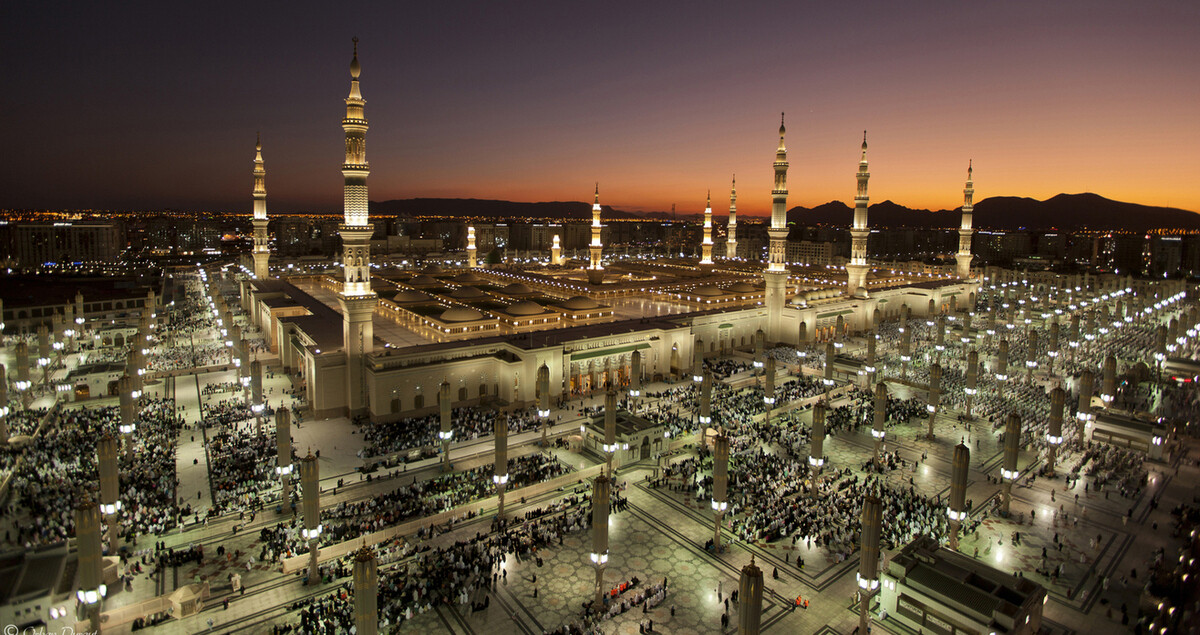Cooling buildings will drive power demand — new tech can help

However you look at temperature data from the past century, one trend is clear: the world will keep getting warmer.
For countries around the globe, adapting to this new reality as populations and urbanized areas grow is crucial. But as more people try to cool down, power demand is set to soar.
While this will have implications for electricity grids, CO2 emissions and more, new technology promises to help.
Space cooling set to need more power than AI
So just how big a challenge will it be to meet the world’s cooling needs? A useful comparison can be found in looking at another predicted driver of power demand — artificial intelligence (AI).
Worldwide, data center electricity use is predicted to triple over the coming decade, rising by around 800 terawatt hours (TWh) by 2035. Space cooling power use is set to triple, too. But that means a rise of 1,200 TWh in the same period — nearly as much electricity as the entire Middle East consumes annually.
More than 80% of projected electricity demand for cooling by 2050 will be in emerging and developing economies — regions more vulnerable to extreme heat and where economic growth is making air conditioning increasingly accessible.
This will improve the quality of life for millions of people and save the lives of hundreds of thousands, making continued access to cooling an urgent global challenge, according to the United Nations.

Meeting heatwave power demand can be a dirty job
As temperatures rise and reliance on cooling devices increases, so too does the heat and emissions they produce — along with the risk of demand spikes that could lead to shortages, restrictions and blackouts, according to the International Energy Agency (IEA).
The capacity of the grid in the hottest regions, for example, needs to cover a doubling of electricity demand compared with milder months. In these places, cooling can account for more than 70% of peak electricity demand.
This can prompt grid operators to bring less efficient, more polluting power plants online to cope. Amid a recent heatwave in Shanghai, one power plant burned 800 tons of coal in an hour to keep the city cooler.

Advances in cooling technology
Experts point to many solutions, including encouraging the uptake of more efficient models of air-conditioners, improving building insulation and shading and employing nature-based measures such as green walls and roofs to reduce the ‘urban heat island’ effect.
New cooling technologies and storage systems will also play an important role.
Modern refrigerants with low global warming potential are helping to make cooling equipment more energy efficient while slashing CO2 emissions.
The latest cooling equipment using heat pump technologies, meanwhile, can provide significantly higher energy efficiency compared to traditional air conditioning — supplying over five times more cooling energy than the electrical energy consumed.
The rise of district cooling systems
At the municipal level, district cooling systems are increasingly being explored in cities worldwide.
These systems chill water at a central plant, distribute it to cool surrounding buildings via a network of underground pipes, then return it to the plant to be cooled again.
Because production is centralized, district cooling provides economies of scale and substantial energy savings over individual-level cooling methods — 35% to 20% less electricity than traditional air-conditioning systems.

At the heart of these systems are centrifugal chillers — essentially large-scale air conditioners that cycle refrigerant between liquid and gas to chill water.
Large-scale advanced models from Mitsubishi Heavy Industries (MHI) Group have been supplied to district cooling plants in the Middle East and Southeast Asia. For example, Dubai, where the company is adding to the chillers it supplied in 2021 with 18 new units for systems that will pump chilled water for cooling to residential, commercial, healthcare and educational buildings.
District cooling systems are also often combined with thermal storage, in which overcapacity during the night is stored for use during the day. In Singapore’s Marina Bay financial district, one of the chillers supplied by MHI can be switched to ice-storage mode during off-peak times when the cost of power is lower, creating a huge ice storage tank that can chill water throughout the day.
Continued innovation will be vital
With space cooling now the fastest-growing source of energy demand from buildings, continued innovation will be vital.
The increased appetite for air conditioning may be testing the grid, but as the IEA says in a recent report on the topic, “the right technology can offer relief”.
![]()
Discover more about the centrifugal chillers at the heart of district cooling systems: https://www.mhi-mth.co.jp/en/products/centrifugal-chiller/





